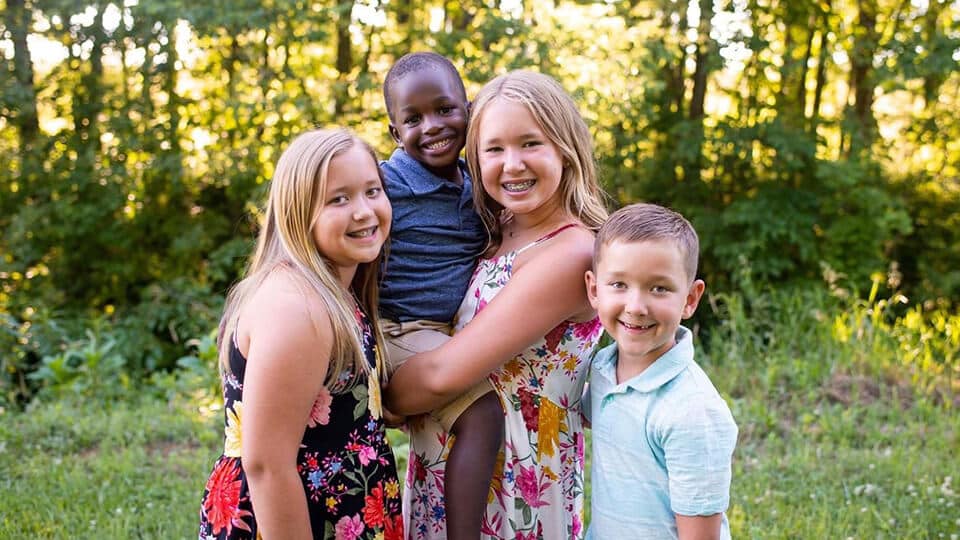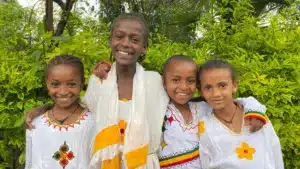
Less than 20 years ago, international adoptions were booming in the United States. Reaching an all-time high of 22,989 intercountry adoptions to the U.S. in 2004 alone, international adoption was well established–and AGCI was proud to play a part in vulnerable children being placed in loving, prepared families through our programs.
Fast forward to 2021, and international adoptions to the United States fell to a staggering 1,785. Was this the beginning of the end for international adoption?
Explaining Today’s Adoption Landscape
In 1993, the Hague Convention on the Protection of Children and Co-operation in Respect of Intercountry Adoption was signed into effect. The Hague Convention established safeguards to ensure intercountry adoptions take place in the best interests of children and created a system of cooperation between countries to ensure those safeguards are respected preventing the abduction, sale of, or trafficking of children.
Since 2008, international adoption in the United States has been governed by the Hague Convention. Naturally, the enforcement of the Hague Convention in the United States influenced adoption statistics as safeguards were enforced to ensure child-safety measures were met before international adoption took place.
While numbers declined following the United States’ signing of the Hague Convention, the Hague Convention is only one contributing factor to the decline of international adoptions to the U.S. Some countries, like Ethiopia and Russia, saw international adoption banned entirely, significantly impacting the international adoption landscape around the world. Domestic adoptions also increased in some countries, meaning fewer children are eligible for international adoption in the first place. In other countries, many family preservation programs have positively enhanced opportunities for children to stay with their biological families.
With these factors, international adoptions to the United States have been on a dramatic decline, decreasing by 73% between 2010 and 2019 alone. Additionally, as COVID-19 made its impact around the world in 2020, international travel restrictions and economic challenges took another hit on intercountry adoption numbers. According to the National Council For Adoption, even domestic adoptions in the United States and foster care adoptions reduced due to the pandemic.
On the surface, many of these changes in the adoption landscape are positive ones: thanks to the Hague Convention, increased opportunities for children to remain with their biological families, and the emphasis of domestic adoption, the needs and best interests of children were placed at the forefront, keeping more children safe from potential dangers that would take advantage of vulnerable children and families. However, despite the decline of international adoption numbers, vulnerable children around the world are in crisis and the need for international adoption remains.
Adoption Is Still Needed
“Children benefit from growing up in a loving home and intercountry adoption has made this possible for hundreds of thousands of children worldwide. The Department of State believes intercountry adoption should be an option for children in need of a permanent home when it is in the best interests of the child and domestic solutions have been given due consideration… Intercountry adoption opens another pathway to children to receive the care, security, and love that a permanent family can provide.” – U.S. Department of State, “Why Adoption”
While AGCI advocates for children to remain with their biological family whenever possible (you can learn how we serve vulnerable children and families around the world here), we recognize that there are some instances where children simply cannot safely remain in the care of their biological family or be adopted domestically in their birth country.
At AGCI, we believe that every child deserves the love of a family. Through our adoption programs around the world, we’re helping more children unite with their loving forever families. We are committed to finding families for children, not children for families, and we carefully and intentionally work to match children with families that are prepared for their specific needs.
Through often tragic circumstances, these children become eligible for adoption, and even more tragically, quite literally have no other path to family. Without international adoption, these children would remain in their respective country’s child welfare system, age out of the system, and never know the love of a forever family. Children adopted through AGCI have the best chance for hope and healing because of international adoption. Hear our adoption team speak about the importance of international adoption in our “Why International Adoption Matters” video.
How You Can Help
Despite declining trends in international adoption numbers, All God’s Children International remains committed to finding families for vulnerable children eligible for international adoption. If you think international adoption may be right for your family, take your first step of faith by submitting a no-obligation, free pre-app. When you submit your pre-app, our team will be in touch to discuss the right options for you and answer any questions you may have. Have questions about international adoption? Read our recent blog, “Your Top International Adoption Questions, Answered.”
Along with adoption, there are many ways for you to become involved in making a lasting difference through AGCI. To learn how AGCI is transforming the lives of children and families around the world, please explore our website, social media channels, and listen to the Together by AGCI podcast. You can also support AGCI’s mission financially or consider becoming a Cycle Breaker today to help break the cycle that keeps children in institutions, families in systemic poverty, and vulnerable young adults from following their dreams.













